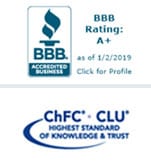

The SEP IRA is the redheaded stepchild of retirement accounts. Less common than traditional and Roth IRAs and lacking the corporate glamor of a 401(k), SEP IRAs are a frequently forgotten, yet highly effective path to retirement security. Could a SEP IRA be right for you?
What is a SEP IRA?
Part of the problem might be that the name “SEP IRA” looks like a puddle of alphabet soup. SEP stands for “simplified employee pension” and IRA for “individual retirement account,” which is an unnecessarily complicated way of saying that this is a retirement account for small business owners and self-employed individuals.
Who is eligible?
If you run your own business or are otherwise self-employed, you can establish a SEP. That includes freelancers, consultants, contractors, sole proprietors, and LLCs, as well as S and C corporations. If you are the employee of a company with a SEP, you can enroll in your employer’s plan if you are over the age of 21, have been with the employer for three of the last five years, and have earned at least $600.
What are the benefits of establishing a SEP IRA?
As with other IRAs, a SEP IRA allows a portion of your pre-tax income to grow tax-free until withdrawal. However, when it comes to contribution limits, the SEP blows other retirement accounts out of the water; while traditional and Roth IRAs do not allow you to contribute more than $6,000 in a year, SEP IRAs allow you to stash away up to $55,000 or 25% of your income (whichever is less). The result is a potent one-two punch of tax-reduction and increased savings.
What are the drawbacks?
SEP IRAs can be a losing bargain if you are the owner of a business with a large number of employees. This is because business owners with SEP IRAs must also establish an account for each employee who is over 21, has worked for the company for three of the last five years, and has earned at least $600. Additionally, any time the business owner contributes to their own account, they must make a matching contribution for each qualifying employee. For example, if Kate, a bakery owner, wants to contribute the full 25% of her income to her SEP IRA account, she must also contribute the full 25% into the accounts of her three employees. The costs of matching contributions can add up quickly and may outweigh the benefits of a high contribution limit.
Who should consider a SEP IRA?
SEP IRAs work best if you run a business with no or few employees. However, it’s important to remember that there is no one-size fits all retirement plan. That’s why we recommend you discuss your unique situation with a financial advisor before making large financial planning decisions.


Sara McKinney
saractag@gmail.com
As Cowen Tax Advisory Group’s Digital Content Marketing Specialist, Sara provides in-house copywriting and manages the company’s electronic records system, email marketing, and blog.




